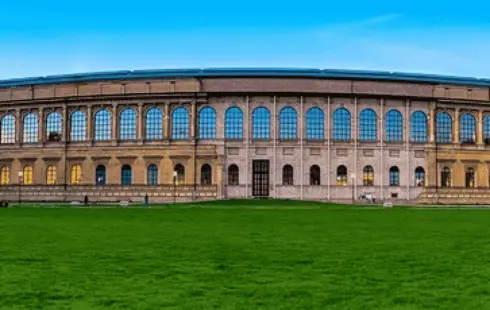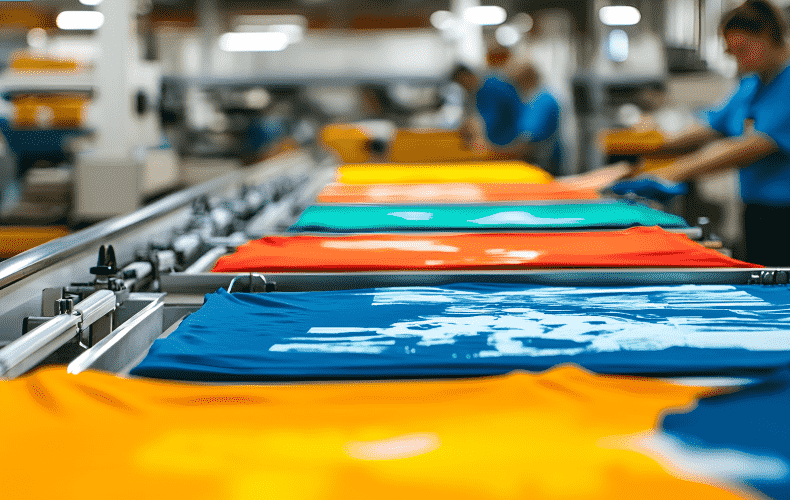
Crypto Investment Entry and Exit Strategies of Institutional Investors
Section: Business
 Venice remains an enduring source of enchantment. The city's unique charm, rising from the waters, continues to evoke an array of sensations much as it did half a millennium ago. Situated directly over the sea, its distinctive vistas undoubtedly influenced the great sensitivity of Venetian artists to color and light. The Renaissance period in Venice is characterized by remarkable colorism, a penchant for innovation, and a profound focus on the human psyche.
Venice remains an enduring source of enchantment. The city's unique charm, rising from the waters, continues to evoke an array of sensations much as it did half a millennium ago. Situated directly over the sea, its distinctive vistas undoubtedly influenced the great sensitivity of Venetian artists to color and light. The Renaissance period in Venice is characterized by remarkable colorism, a penchant for innovation, and a profound focus on the human psyche.
The new Alte Pinakothek exhibition delves into the groundbreaking innovations of Venetian painting, a legacy that extends into the modern era. The showcase combines 15 masterpieces from Munich's collection with 70 international loans, with a primary focus on the evolution of portraiture and landscape painting between 1500 and 1550. It is within these two domains that the unique characteristics and artistic achievements of Venetian painters are most vividly portrayed.
The beginning of the 16th century brought the threat of wars, epidemics, and the discovery of new sea routes, which could have destabilized Venice from its maritime and trading dominance. However, artistic production in the city continued to thrive, thanks to the convergence of diverse cultural traditions, which engaged in dialogue with the emerging humanism of the era. In close collaboration with their erudite patrons, Venice's leading artists created nuanced depictions of individual personalities. These portraits straddle the line between realism and idealization, outward status and lyrical enigma. Venetian artists, in their quest to rival poetry, also excelled in crafting atmospheric landscape views, which quickly established this motif as a distinct subject.
By 1500, autonomous portraiture had firmly established itself in Venice, where it was inspired by Netherlandish and German models. Giorgione's revolutionary work gave rise to new portrait types that portrayed both inner and outer movements, in either a lifelike or idealizing manner. Male portraits from 1505 to 1530 reveal a shift from a focus on external attributes to a more psychologically-driven interpretation of the individual's character. Titian, in particular, produced images that went beyond social status to keenly visualize the personality and often hidden character of the sitter. The epitome of Venetian female portraiture was embodied in the enigmatic belle donne. These images maintained Petrarch's ideals of female beauty while still displaying individuality and lifelike qualities. Their charm lies in their intriguing ambiguity.
Giovanni Bellini and his successors presented figures in devotional paintings set within imaginative landscapes, influenced by Northern panel paintings and prints. These views of the natural world were more than mere decoration; they allowed the gaze to wander freely, conveying meaning and mood, lending themselves to associative viewing and meditative contemplation. Alongside devotional works, allegorical and mythological themes provided an opportunity to explore the creative potential of landscape motifs. Poetic idylls, often populated by shepherds and nymphs, were circulated through drawings and prints, reflecting the yearning, cultivated primarily in Venice, for alternative Arcadian realms in which to seek refuge from life's hardships.
The learned individuals of humanist circles, including Giorgione, Titian, and Sebastiano del Piombo, shared a literary interest in bucolic literature, both ancient and contemporary. These artists responded to the wishes of their patrons by creating visual innovations that expressed a longing for a life filled with beauty, love, and knowledge. The gentle revolution of Venetian painting has left us with a visual record of how the cultural elites of the time perceived themselves and the world they lived in. These creations not only invite us to journey back in time but also address themes that remain relevant today.
The exhibition's scenic design, enhanced by sound installations for select paintings, explores the preconditions and formative impulses that gave rise to these artistic innovations, and their contemporary perceptions. The works on display include pieces by renowned artists such as Giovanni Bellini, Giovanni Battista Cima da Conegliano, Marco Basaiti, Vincenzo Catena, Giorgione, Titian, Tintoretto, and many more.
Curator: Andreas Schumacher
Research assistance: Annette Kranz, Johanna Pawis
Curatorial assistance: Theresa Gatarski
CATALOGUE
Accompanying the exhibition is a richly illustrated catalogue, available in separate German and English editions. Contributions by T. Gatarski, J. Grave, C. Henry, H. Kaap, A. Kranz, A. Mazzotta, J. Pawis, A. Schumacher, C. Whistler.
Hirmer Verlag, 256 pages, 166 colour illustrations, 21.5 x 26.5 cm, softcover with flaps, due for release in October
Museum edition (available from museum gift shop) priced: EUR 34 (limited copies)
Retail price: EUR 39
ACCOMPANYING PROGRAMME
Besides a comprehensive selection of guided tours, our programme includes workshops, concerts, and the event "After Work - Vino, Arte, Musica".
For more details on the exhibition and the programme of activities, see: www.pinakothek.de/en/venezia500
OPENING TIMES
Please note that on Tuesdays and Wednesdays extended opening hours apply.
OPENING | 26 OCTOBER 2023, 19.00-22.00
EXHIBITION DURATION | 27 OCTOBER 2023-4 FEBRUARY 2024
TUE-WED: 10.00-20.00
THURS-SUN: 10.00-18.00
MON: closed
Ever wondered what the most popular roulette wheel numbers are? When that little ball drops, it doesn't tell us which numbers get hot or cold; every spin resets the game. The real question isn't which...
Step into almost any online casino in Germany, and one name echoes louder than most: Book of Ra. This iconic slot game, wrapped in the allure of ancient Egypt, has become a fan favourite across the...

Section: Business

Section: Arts

Section: Arts

Section: Business

Section: Business

Section: Arts

Section: Health

Section: Arts

Section: News

Section: News
Health Insurance in Germany is compulsory and sometimes complicated, not to mention expensive. As an expat, you are required to navigate this landscape within weeks of arriving, so check our FAQ on PKV. For our guide on resources and access to agents who can give you a competitive quote, try our PKV Cost comparison tool.
Germany is famous for its medical expertise and extensive number of hospitals and clinics. See this comprehensive directory of hospitals and clinics across the country, complete with links to their websites, addresses, contact info, and specializations/services.
Join us for the 10th Summer Concert at the Heilig Geist Church, featuring the captivating sounds of two trumpets accompanied by a majestic organ. This concert will showcase works by renowned composers including J.S. Bach, A. Torelli, P. Franceschini, H. Purcell, and others.



No comments yet. Be the first to comment!